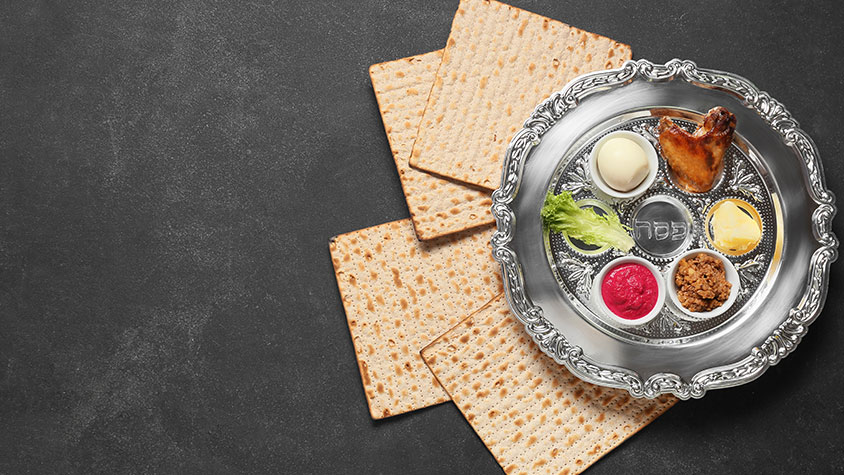The festival of Pesach, known as Passover, holds multiple layers of meaning, particularly in Israel. Within the Jewish faith, Pesach marks the Israelites’ journey from slavery to freedom, unified, as a sovereign nation, after suffering 400 years of harsh slavery under Egyptian rule.
The story of the exodus from Egypt is ultimately a celebration of freedom, but it is also a powerful metaphor that is appreciated not only by Jews, but by Christians as well.
The festival has its roots in the key events which unfold in Exodus chapters 12 and 13, where the word “pesach” refers to the ancient sacrifice, Korbon Pesach, known as the Paschal Lamb. Pesach also refers to God having “passed over” (pesach) the houses of the Israelites during the tenth plague when the Israelites painted blood from what is the sacrificial lamb on their doorposts.
“I will pass through the land of Egypt on this night, and I will smite every firstborn in the land of Egypt, both man and beast, and upon all the gods of Egypt will I wreak judgments, I, the Lord. And the blood will be for you a sign upon the houses where you will be, and I will see the blood and pass over you, and there will be no plague to destroy [you] when I smite the [people of the] land of Egypt. And this day shall be for you as a memorial, and you shall celebrate it as a festival for the Lord; throughout your generations, you shall celebrate it as an everlasting statute” (The Complete Jewish Bible, Shemot Exodus 12:12–14).
Celebrating Pesach
The central ritual of Pesach is the Seder (which literally means “order”), a festive meal featuring foods laid out symbolically to represent the journey to freedom from Egypt. Observed for seven days in Israel and eight days in the Diaspora, the Seder meal must be presented in a precise order in the re-telling of the exodus story, with the service and ceremony of the meal following a prescribed order from the Haggadah, the traditional text that tells the story of redemption.
For the duration of the holiday, it is forbidden to eat leavened food products (such as bread, pasta, etc.). This observance is based on the Jewish tradition that explains the Israelites’ haste to escape from Egypt and not having enough time to wait for bread to rise. Instead, they ate matzah, unleavened bread.
Part of the Seder includes hiding the afikoman (meaning “that which comes after,” or dessert), which is half of a piece of matzah that is intentionally broken during the Seder. There is a game that old and young alike play by hiding the afikoman and later, when the afikoman is found, the children receive a prize for finding it as everyone gathered around the table eats a piece of the afikoman for dessert, symbolically as a lasting taste of the Seder observance.
The Pesach Seder holds an especially rich meaning for believers in Jesus, as the Last Supper was, in fact, the Seder meal. The observance of communion was born out of the Seder, the bread He broke and for which He gave thanks is the Pesach matzah, and the cup of the new covenant in His blood is one of the four cups of sacramental wine consumed during the Seder.
The process of preparing for Pesach involves a ritual cleansing of the home, removing all leavened products, known as chametz. Some practice biur chametz (burning chametz), so as to remove all chametz from the home. Others store remaining chametz in an area of the house separate from food that is kosher for Pesach, or food that is mandated as acceptable to eat during Pesach, and then, symbolically sell it. This can be arranged through a local synagogue, and chametz is usually sold for a nominal amount of money (often a few coins).
Experiencing Pesach in Israel
If you plan to visit Israel during Pesach, you will notice that life does not come to a halt. In fact, it is quite the opposite. You will find plenty to do in Israel during the holidays. In Jerusalem alone, you will find festivities galore, including street performers, sidewalk artists, outdoor markets, and much more. Many restaurants offer food that is kosher for Pesach, adhering to strict dietary laws associated with Pesach. Even ice cream can be prepared in accordance with the Pesach dietary laws. Ben & Jerry’s ice cream added a charoset flavor to their line. Charoset is a Seder dish comprised of chopped nuts, apples, brown sugar, cinnamon, and dates, depending on the customs of each family, and grape wine or juice. It is eaten to remind the Jewish people of the mortar their forefathers used in making the bricks they were forced to build for the Egyptian Pharoah.
The Pesach Seder traditionally ends with the hope-filled and jubilant phrase, “L’shana ha-ba’ah!” (“next year in Jerusalem!”), as Seder guests, now standing around the open front door, sing a hearty welcome song to the prophet Elijah, who, according to Jewish belief, is appointed to announce the coming of the Messiah.
Next year you can celebrate Pesach in Jerusalem!
Visit www.israeladvantagetours.com to plan your trip of a lifetime!








